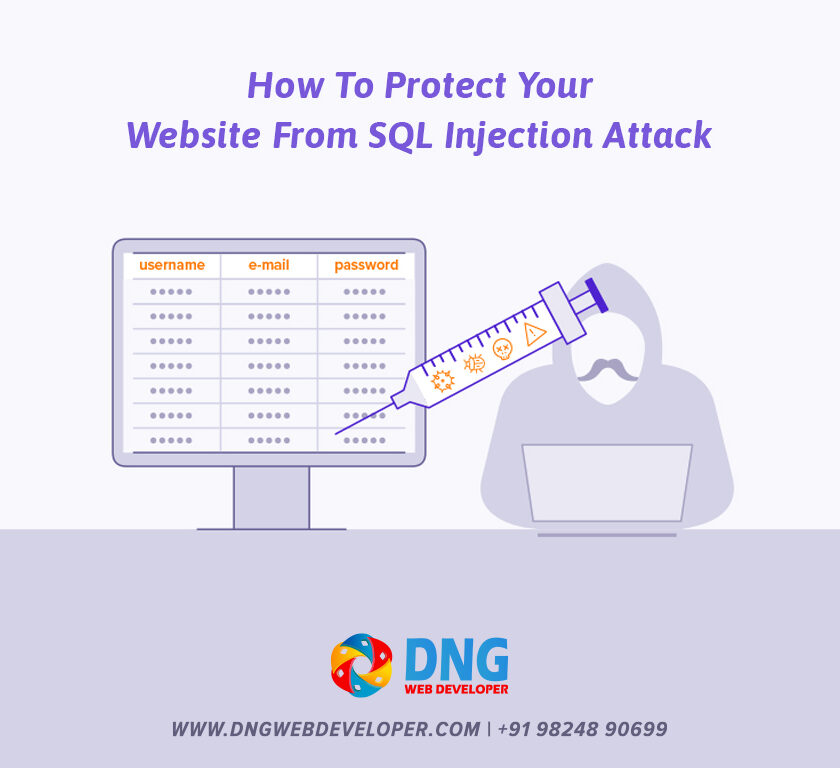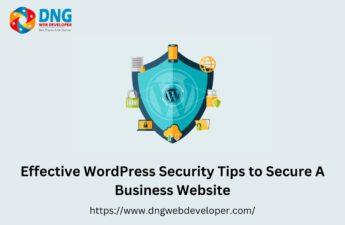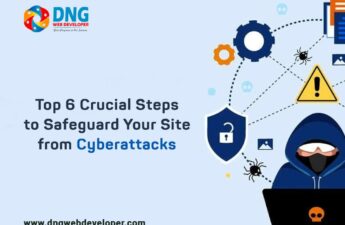What is SQL Injection (SQLi)
As a sort of injection attack, SQL Injection attack (SQLi) enables the execution of malign SQL commands. In a web application, these statements control a database server. SQL Injection vulnerabilities can be exploited by SQL injection attack to overcome application security protections. If they are able to get beyond the authentication and authorization of a web page, they can access the full SQL database. In addition, they can utilize SQL Injection attack to create new records to the database, edit existing ones, and delete them.
There are SQL Injection vulnerabilities that can affect any website or web application that uses a SQL database, such as MySQL or Oracle or SQL Server (among others). Cybercriminals may use it to gain unauthorised access to your sensitive data, including: customer information, personal information, trade secrets, intellectual property, and more Security experts consider SQL Injection attack to be one of the web’s oldest, most common, and most dangerous vulnerabilities.

Steps to prevent SQL injection attack
There are many things website owners can do to protect themselves from SQL injection attack, even though they remain the most dangerous threat for web administrators.
To reduce the risk of being a victim of a SQL injection attack, take these steps:
1. Validate User Inputs
In order to prevent SQL injection attack, validating user inputs is a common first step. It’s best to start by identifying the essential SQL statements and creating a whitelist of valid SQL statements, excluding any unvalidated ones. This is known as input validation or query re-design, depending on the context.
Additionally, you should configure inputs for user data based on the context in which the data is being used. Filters can be used to limit the characters allowed in email address fields, such as a required “@” character. The same is true for telephone and social security numbers, which should only be allowed certain numbers of digits.
SQL injection attack can still use this tactic to gather information about the victim, but it will make it more difficult for them to do so.
2. Sanitize Data By Limiting Special Characters
Inadequate data sanitization is another way to protect against SQL injection attack. It’s critical to prevent string concatenation because SQL Injection attack can take advantage of a database’s vulnerabilities using unique character sequences.
A MySQL function called mysql real escape string can be used to do this (). In this way you can prevent dangerous characters such as the single quote’from being passed to a SQL query. Unauthenticated queries can be prevented by using prepared statements.
3. Enforce Prepared Statements And Parameterization
Unfortunately, input validation and data sanitization aren’t a panacea for all of our woes. All database queries should be written using prepared statements with parameterized queries, also known as variable binding. You can distinguish between user input and code by defining all SQL code involved with queries, or parameterization.
As a coding technique, dynamic SQL has the potential to offer greater flexibility in application development, but it can also introduce SQLi vulnerabilities into code instructions. This ensures that any malicious statements are treated as data, rather than a command, by the database by sticking with the standard SQL syntax.
4. Use Stored Procedures In The Database
In the same way that parameterization requires variable binding, using stored procedures also does. While prepared statements attempt to mitigate SQLi by using prepared statements, stored procedures use stored procedures that reside in the database and are called from web applications. If dynamic SQL generation is used, stored procedures are also susceptible to vulnerabilities.
Only one of the parameterized approaches, according to OWASP, is required, but neither method is sufficient for optimal security. Our other recommendations should be followed when crafting parameterized queries.
5. Actively Manage Patches And Updates
It’s not uncommon for SQL injection attack vulnerabilities to be found in applications and databases, which are then made public. Businesses must stay abreast of the latest cybersecurity news and apply patches and updates as soon as possible. If you’re working with SQLi, this means keeping all web application software components up-to-date. This includes database server software as well as web server software and frameworks, libraries, and plug-ins.
If your organisation has trouble patching and updating programmes on a regular basis, investing in a patch management solution may be worth it for you.
6. Raise Virtual Or Physical Firewalls
Web application firewalls (WAFs) can help filter out malicious data and are available as software or hardware appliances.
There is a comprehensive set of default rules in today’s firewalls and the ability to change configurations as needed, including NGFWs and FWaaS offerings. WAFs can be useful if a patch or update has not yet been released.
ModSecurity, a free, open-source module for Apache, Microsoft IIS, and nginx, is a popular example. To filter potentially dangerous web requests, ModSecurity provides a sophisticated and ever-evolving set of rules. Many attempts at sneaking in SQL through web channels will be foiled by its SQL injection attack defences.
7. Harden Your OS And Applications
While SQL injection attack are mitigated, your entire physical and virtual framework should be working properly. To harden operating systems and applications in the wake of the big news about supply chain compromises in 2020, many are turning to NIST and other industry-standard security checklists for guidance and inspiration.
A company’s defensive posture can be strengthened by adopting application vendor security guidelines, which can help identify and disable unnecessary applications and servers.
8. Reduce Your Attack Surface
A hacker’s attack surface refers to the number of possible entry points into a computer system. For SQL injection attack, this means getting rid of any database functionalities that you don’t need, or securing them even more thoroughly.
xp cmdshell, a Microsoft SQL Server extended stored procedure, is one such example. This procedure can spawn a Windows command shell and pass a string for execution to the Windows command shell that is created. Because xp cmdshell creates a Windows process with the same security privileges as the SQL Server service account, an attacker can cause serious damage to the SQL Server.
9. Establish Appropriate Privileges And Strict Access
Due to the importance of a SQL database to an organisation, it’s critical to enforce strict policies for least privilege access. In website development it shouldn’t need additional INSERT, UPDATE, or DELETE permission for a database if it only needs to use SELECT statements.
You should only grant others access to your database when absolutely necessary. Limited access accounts are much safer for general use and limit an attacker’s access if a less-privileged credential is stolen.
10. Limit Read-Access
Configuring read-only access to the database is related to the principle of least privilege for SQL injection attack protection. Even if you only need read-only access for active users in your organisation it’s still a relatively simple process to implement. In spite of that, this extra step is crucial to preventing attackers from altering stored information and stealing it.
11. Encryption: Keep Your Secrets Secret
You should always assume that applications connected to the internet are not secure. In order to protect passwords, confidential data, and connection strings from being intercepted or compromised, encryption and hashing are of paramount importance
As a data protection technique, encryption is almost universally used today and for good reason. Sensitive information could be in plain sight for an intruder if encryption and hashing policies aren’t in place. Microsoft notes that encryption, while only a small part of the security checklist, “turns the problem of protecting data into a problem of protecting cryptographic keys.”
12. Deny Extended URLs
To further complicate things, SQL injection attack can also send excessively long URLs, which will prevent a server from logging the entire request. It was reported in 2013 that hackers exploited Foxit by sending long URLs that would trigger a stack-based buffer overflow on users’ computers.
As another example, Microsoft IIS is designed to handle requests that are over 4096 bytes in length. The web server software, on the other hand, fails to log the contents of the request. While performing queries, SQL injection attack are able to remain undetected. Set a limit of 2048 bytes for URLs to avoid this.
13. Don’t Divulge More Than Necessary In Error Messages
To prevent SQL injection attack from learning about database architecture from error messages, they should be kept as brief as possible. A customErrors mode set to “RemoteOnly” can be used to display verbose error messages locally while keeping an external attacker in the dark as to why their actions caused an unhandled error. In order to protect the organization’s internal database structure, table names, or account names, this step is essential.
14. No Shared Databases Or User Accounts
Multiple websites or applications using the same database can lead to disaster. A similar situation exists when it comes to web application user accounts. Having a shared access might provide flexibility for the managing organisation or administrator, but it also poses an unnecessarily greater risk.
Links should have minimal access to the target server and should only have access to mission-critical data, in the best case scenario Servers that are connected should have separate logins from any processes on the destination server.
15. Enforce Best Practices For Account And Password Policies
Even though it may seem obvious, organisations must adhere to the best account and password policies in order to ensure foolproof security and data integrity. Default and built-in passwords should be changed immediately upon receipt and before use, with regular password updates scheduled for regular intervals. All SQL server administrator, user, and machine accounts must have passwords that are both long and complex.
16. Continuous Monitoring Of SQL Statements
All SQL statements of database-connected applications should be constantly monitored by organisations or third-party vendors, including documentation of all database accounts, prepared statements, and stored procedures. Identifying malicious SQL statements and vulnerabilities becomes much easier when you have visibility into how SQL statements work. Admins can delete and disable unnecessary accounts, prepared statements, and stored procedures during this ongoing review.
Like PAM and SIEM, network monitoring tools that rely on machine learning and behavioural analysis can enhance your network security.
17. Perform Regular Auditing And Penetration Testing
It is becoming increasingly important to conduct regular audits of your database and application security, including checking suspicious activity logs, group membership privileges, and variable binding terms.
Testing your defences against a variety of possible attacks, including SQLi, is just as important as auditing for malicious behaviour. Cross-site scripting, outdated software, unpatched vulnerabilities, injections and insecure passwords are among the most common threats that penetration testing companies can detect and remediate.
18. Code Development & Buying Better Software
A hierarchy of solutions exists in the vast market of software solutions. While large organisations can afford expensive third-party solutions and may even develop the software further in-house, smaller organisations must make do with less or use free, open-source tools, which is perfectly understandable.
Even if vendor code writers are ultimately responsible for flaws in custom applications for a client, they are only partially responsible. If you’re looking for a new vendor, be sure to ask about code review duties in the contract.
Conclusion:
The use of input validation, parameterized queries, stored procedures, and escaping as preventative measures are effective against a wide range of attack vectors. But because SQL injection attack come in a wide variety of patterns, they are often unable to protect databases. The above strategies should therefore be used in conjunction with a trusted WAF in order to cover all bases. Primary benefit of WAF is that it protects custom web applications that would otherwise be left unprotected from hackers and other threats.



1 thought on “How to protect a website from SQL injection attack”
Comments are closed.